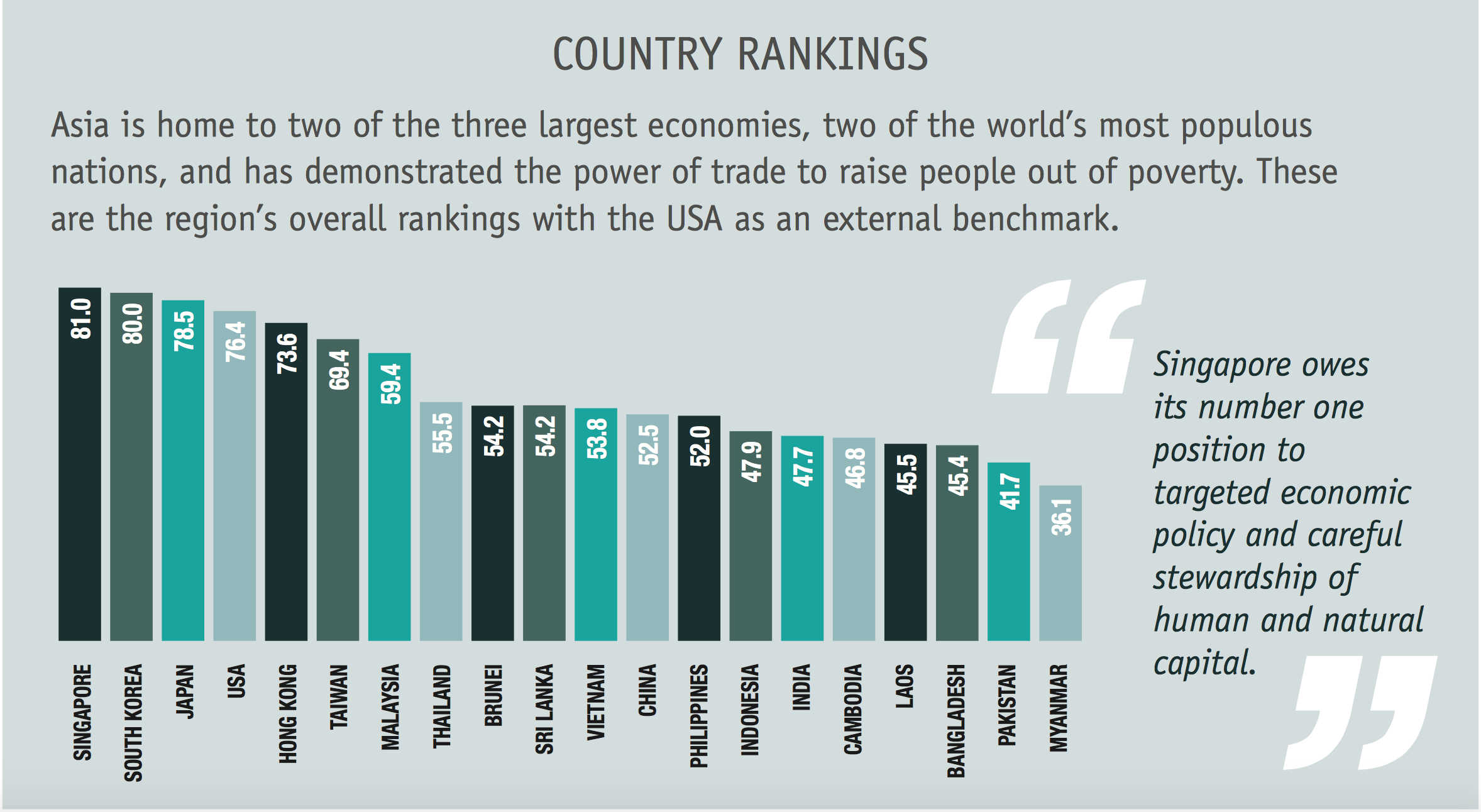Following the developments of the last decade it is possible to affirm that Asia is indeed a fast-growing economy. Trade-led growth has dramatically reduced poverty in Asia. As a matter of fact, Asia economies, and China more specifically, have harnessed trade for economic growth, lifting 1.3 billion people out of poverty since 1990. However, this strong and speedy development could have negative effects on the environment and more generally on the side of sustainability. On the one hand, there are more and more countries that are adapting to international standards while trying to not sacrifice growth, on the other hand, there are those who continue to exploit the surrounding world without paying too much attention to the consequences of their uncontrolled actions. In this regard, the Hinrich foundation, an Asia-based philanthropic organization developed a unique sustainable trade index (STI), based on 3 pillars: the economic (use of commercial rates), social (presence of child labor) and environmental (presence of environmental standards).
The Sustainable Trade Index evaluates the readiness of 20 Indo-Pacific economies for sustainable trade. It was created to encourage meaningful discussions amongst policymakers and business executives about the linkages between trade and sustainability. Therefore, its scope is that of classifying Asian countries by defining those most attentive to the sustainable issue in all its aspects.
In the general ranking, the first place is shared between Japan and South Korea (score of 75.1), that scored above average in all three pillars, highlighting a situation of strong balance. These are followed by Singapore (70.2), Hong Kong (68.3), Taiwan (67) and China (56.5). China’s overall score was held back by its weak performance in the social pillar.
Focusing on each individual indicator is possible to notice how the ranking varies. Starting from the economic pillar, that measures a country’s ability to grow its economy through international trade Hong Kong ranks first. This is due to its low commercial costs and a very well-developed financial sector. The latter has contributed enormously to GDP growth in recent years. However, it is also important to highlight that the recently introduced safety law could have negative effects for the coming years. In second place we find Singapore (68.7), followed by China, South Korea and Malaysia.
Moving on to the social pillar, that measures a population’s tolerance for trade, given the costs and benefits of economic growth, the gold medal goes to Taiwan. Its strengths are the enhancement of human capital, thanks to education. In second place there is Japan, followed by South Korea, and Singapore. In the ranking based on the social pillar, China does not appear on the podium. This, according to the report, is closely linked to weak labor standards and the one-child policy which has led to several gender imbalances and a decrease in the population.
Finally, focusing on the environmental pillar, measuring a country’s management of trade-related environmental externalities,Japan ranks first. The country is the leader in sustainable trade, followed by Singapore, Hong Kong and South Korea. These are the only ones that have obtained a high score, thanks to a higher air quality and a lower water pollution level. In Hong Kong, for example, they introduced a “tax” to limit carbon emissions. From China down, the average is around 50.0 points. This obviously means that on the environmental level there is still a great margin of improvement.
Due to the COVID-19 pandemic, the world is being faced with continuous challenges. On the economic front, this international crisis is expected to be more disruptive to global trade than the 2008 financial crisis. Policymakers in Asia can therefore lay the foundation for a more sustainable and socially inclusive economy, focusing on specific actions. Among these, there is the need for more investments in education in Asian countries and in particular on tertiary education to keep up with the pace of digitization. Moreover, it is necessary for these countries to learn from the environmental benefits of the pandemic. As a matter of fact, the significant decrease in emissions during the strict quarantine period enforced in China are a strong reminder of the environmental and social costs of uncontrolled economic growth. Japan, South Korea and China have already set their objectives to reach carbon neutrality respectively for 2050 and 2060. Therefore, the next steps to pursue economic growth should be achieved without compromising the wellbeing of society and that of the environment.
Image – Hinrichfoundation.com

